Outside air for woodstove
Been woodstove shopping lately and noticed that “outside air” for woodstoves is done in a couple of different ways. The European stoves in general do not seem to have a direct connection for the outside air duct–it’s what the salespeople are calling “proximity” air, meaning a 3″ duct from outside terminates very close to the stove, but does not connect. The American stoves are much more likely to have a direct connection. To me, a direct connection makes perfect sense, whereas the “proximity” air looks like an air leak.
What’s your experience with this?
GBA Detail Library
A collection of one thousand construction details organized by climate and house part



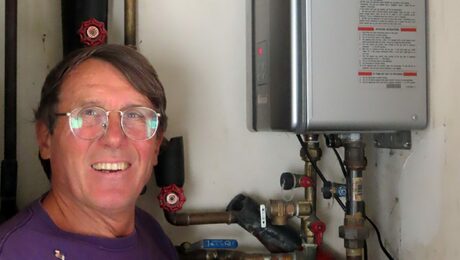
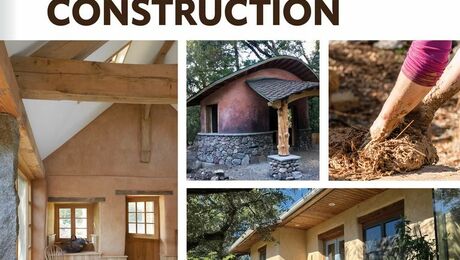
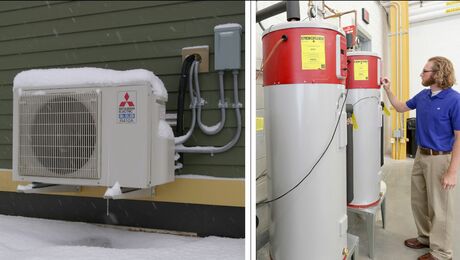
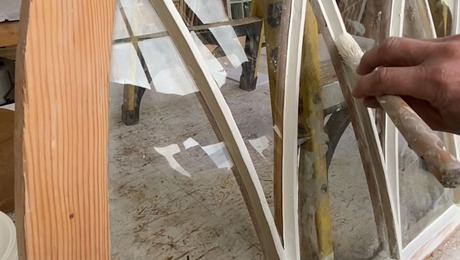
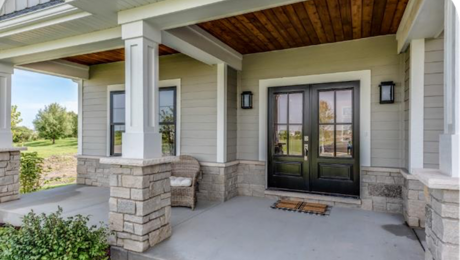
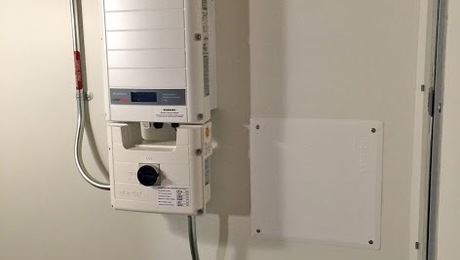
Replies
Curious: Is the proximity air just a straight shot into the house, or is there a trap in the line in the wall, so that the air only comes through when the stove is pumping air out?
John,
Just to clarify: the "trap in the line" concept works with plumbing drains, but it doesn't work with air intake ducts. If air is leaking out from the top of the house, air will enter a leak at the bottom of the house -- whether or not the leak at the bottom of the house has a trap in the line. A hole is a hole.
David,
I've never understood the concept of "proximity air".
A direct connection to the woodstove is almost like having "sealed combustion".
Even with a direct connection, I would make sure to install the stove so as to get the best possible chimney draft - to help ensure the intake air is constantly flowing in the right direction.
Of course a direct connection brings in only the air that the stove needs, and not additional cold air according to how leaky the house is and the stack effect of its configuration. But the other benefit is that you don't have all that cold air dumping into the house when the stove burns out overnight, and any other time when the stove is not burning and the outside air damper is not closed (if there is one).
I selected my stove for the new house partly because it did have an outside air connection on it. I also installed a double-wall damper section on the double wall chimney pipe going from stove to ceiling, so that I can shut off most of the natural drafting through the system when the stove is not in use. I must say that I have been quite forgetful about closing that damper when the stove is not in use. I do turn the air supply lever on the stove itself to its lowest setting, and I can't say that corner of the house is particularly cold.
I can think of one reason why some stove manufacturers prefer indirect connections for outside combustion air: they're safer. (However, they certainly incur an energy penalty.)
A few house fires have occurred in homes with outside combustion air intakes that connect directly to the wood stove. Here's the scenario for trouble: a gust of wind causes backdrafting, and hot coals blow into the air-intake duct. Some homeowners have used PVC for these ducts -- a bad idea. Obviously, metal ducting is safer, but hot coals in the air intake duct are always scary.
Regarding building a trap into an air supply duct: a well-respected local home inspector once suggested that to me during a home energy audit, for makeup air for the boiler. He said that cold air would settle in the bottom of the trap and minimize air leakage. The concept makes logical sense to me but we didn't do it on that house, and I've never seen an actual example. Is his logic flawed?
Michael,
I've heard the idea, too, but yes, the logic is flawed. The pressure differences created by the stack effect in (for example) a two-story house are going to pull air through the trap, and therefore cold air is unlikely to "settle" in the bottom of the trap.
Martin: If I recall, Riversong uses a trap w/ a 3' drop, and I assume it works better than a hole at the floor. Here is a link to the City of Fairbanks' design: I also assume it works. A trap we put in my son's boiler room wall seems to be working fine; no cold air in, no icing outside, indicating moist, warm air leaving.
http://www.fairbanksalaska.us/wp-content/uploads/2011/07/COMBUSTION_AIR.pdf
John,
I just got off the phone with Gary Nelson, the guru from the Energy Conservatory, and one of the founding fathers of the air sealing business in the U.S. He agreed with me completely.
He said, "You're right. The P-fitting maybe increases the resistance slightly, but not much. That 'trap' should not be called a trap; it should be called a siphon. It doesn't act like a trap at all. The reason some people like it is that when they install a so-called trap, they usually terminate the pipe so it aims at the ceiling. A pipe without a trap is usually aimed at the floor, causing the incoming cold air to pool at the floor. The pipe with the trap -- the one aimed at the ceiling -- allows all that air rushing into the house to mix with the air in the room before it falls to the floor, so the temperature of the air doesn't feel as cold by the time it reaches the floor compared to a pipe without a trap aimed downward. But just as much air is coming in, in either case."
OK, you guys are getting off track and failing to give me the free, instant, professional advice I want. Anyone have a woodstove with this so-called "proximity" air detail? I can easily rule it out and go with a hard connection, but it means I have to tell my wife that the uber-cool Morso stove we like is out and a more mundane Vermont is in. Throw me a bone here!!
Sorry for the hijack David, it seemed relevant to your situation. We don't install many woodstoves but when our mason builds fireplaces he prefers the intake air to be away from the firebox, for the reasons Martin stated.
(Martin, thanks for the air trap information!)
David,
I was about to make an impassioned speech urging you to buy a stove from Vermont Castings instead of Denmark, to help the Vermont economy, until I remembered that Vermont Castings was purchased by a Canadian company, CFM Majestic.
Sorry for the thread hijack...
Martin: Interesting. That is what I found w/ a trap I tried to install, with TWO, 5- trap sections. I was told it failed because it did not come through the wall, as per the City of Frb suggestion. I'll have to put a match to my son's and see if air is rushing in. I still don't see how air can rush in if the house is tight, though. OK; back to the OP's thread.
Could this be prevented by a backdraft damper at the external end of the (metal) air inlet duct?
Peter,
Perhaps.
Two caveats: the damper would have to be light and sensitive enough to open under the pressures exerted by the rising flue gases; and you wouldn't want any rubber weatherstripping around the edges of the damper if it were to be installed close to the wood stove.
I'd be wary of a homebrew solution, and would stick with commercially available ducting kits.
John,
You're right, of course, that air can only leak in if air is leaking out elsewhere. But it is very rare for a house to have just a single hole.
Because of stack and wind effects, indoor air is always striving to leave the house through tiny cracks. If there is a big hole letting air in elsewhere, that hole facilitates the departure of air in areas of the house that are under positive pressure with respect to the outdoors.
I've talked to the techs at Jotul & Scan about this issue, they say very clearly that in Scandinavia, houses with HRV & balanced ventilation don't use outside air intakes, that it's a "strange Canadian thing" that causes more problems than it fixes. The mentioned the same issue as Martin, back-drafting into your fresh air intake is disastrous and a real fire hazard.
The idea is that if you have a balanced ventilation system, your house will be at the same internal pressure as the outside, and you won't get the strong pressure differentials that can create back-drafting. As well, they quoted very low CFM needs for the combustion in modern EPA stoves, I remember 15 CFM? In any case, it's much lower than a big tube through your wall would be providing and doesn't need additional supply beyond normal house leaks.
That's what I've heard direct from the manufacturers, but you should call a tech back at headquarters and ask for yourself.
Jesse, the AHJ here specifies outside air. It appears that they will accept the "proximity" detail, but in my brief conversation with them we didn't get to a final determination, mostly because the folks there don't always agree with each other. I posted here mainly to get a sense of what folks out there have, and so far, no one has actually described their own setup, so I am thinking that either (a) few if any of you have a woodstove, or (b) you don't have outside air supplies of any kind, or (c) it's some kind of conspiracy to keep newbie woodburners out of the loop.
David: Have you queried on hearth.com? I suspect this has been talked about on that site; wood is what they do.
We're just finishing a pretty tight house (0.8 ACH 50) that Jesse's firm designed - we did not include make up air for their wood stove and they're having some draft problems. May have to add a kit.
David,
I will be installing an airtight stove as the main heating appliance in the house I'm building. I ran 3" ABS under the footing and slab and intend to have a direct connection to the stove using a kit provided by the stove manufacturer.
Martin is right though that there have been fires caused by backdrafting into the air supply...
I haven't been too worried about it though. Chimney draft in my case will be pretty strong...
Whatever route you choose, just don't run the stove pipe out through and then up the outside of an exterior wall.
I have an EPA insert with a sealed door. Not a woodstove, but I assume the same principle. How does the air supply get to the unit if there is not a direct connection? Or is a sealed door not really a sealed door? Please educate me.
John
Lucas, sounds like you are hard-ducting all the way to the stove. If you don't mind, I'm curious to know which stove you are installing.
John, I'm not much familiar with woodburning inserts. What make/model do you have? Seems like you would have an obvious air inlet somewhere under or outside the house if there's an outside air intake for it.
David, I have a Lennox (Brentwood model) and it is built into the wall like a fireplace. It does have a built in outside air inlet. Since it has a sealed door I assumed it was similar to a woodstove as far as the firebox. So I am just curious how a unit can get air without a direct connection .I assume the woodstove has a sealed door.
John, is there a wall cap outside behind the fireplace? If so I'm betting that you do have an "airtight" installation. If there's no sign of an inlet on the exterior of the house (or in the crawl space), then they could have installed it without the ductwork, in which case it seems like it would be breathing indoor air.
David,
That's correct, I am planning to connect the stove intake to the ABS duct.
I can always change my mind though...
Simpy disconnect the stove from the ABS for "proximity air" or disconnect then plug the ABS to let the stove draw conditioned air.
I went with the "Homestead" in matte black.
are the techs at Jotul & Scan saying to use the HRV system as make up air for their stoves? Sounds a little backwards to whatever I've read on this site about the subject. A "strange Canadian thing"? Again, isn't it a "air tight house/sealed combustion appliance thing"?
We have a Hearthstone Equinox stove and just waiting for the OAK kit to come in from the manufacturer. Currently, I can actually feel and hear it sucking large amounts of air through the air intake opening and something tells me, it's much more than 15cfm......lol
How about throwing conditioned air up the chimney, few get their wood free, and HRV/ERV don't run for free. In addition a wood heated home is sort of by definition single point heated, if you drew drafts from 'wherever' those 'wherevers' are going to get cold since you don't have walls lined with radiators to reheat them.
My last house had a gas fired sealed combustion fireplace. drew through special vent pipe/termination. Dunno if they do such a thing with wood, probably wouldn't work
Wonder if they can claim higher performance since cold air is denser[more O2]
Works for cars!
I live in a < 1.0 ACH50 house with an HRV, heat 90% of the time with a small Scan DSA4 wood stove insert. The Scan does not have an outside air intake, even if we wanted one.
No draft problems in my experience unless the clothes dryer is running with its ~200 CFM exhaust, which can make the stove hard to light from a cold start. IF we're trying to light the stove, we make sure to not have the dryer running.
If the stove is running and hot, the clothes dryer doesn't cause any problems, the draft is stronger than the negative pressure, even in that worst case.
There are always risks to combustion appliances in well built houses, we're very glad to have CO detectors on every level of the house along with our smoke detectors.
John Reimers,
What I've been told is that EPA stoves are required to NOT be sealed at their doors, to ensure that the user can't damp them down far enough to cause air quality problems, and ensure that the wood burns at at minimum temperature.
I think there are vent slots in an EPA stove that always allow a certain amount of combustion air to be drawn into the firebox, regardless of what the user does with the damper.
David,
The answer is b) of course ;-)
Regarding "proximity air," look at this article, last picture:
http://www.buildingscience.com/documents/insights/bsi-035-we-need-to-do-it-different-this-time/?searchterm=sealed combustion
Seems like the same idea for a furnace, right?
I believe the dedicated outside air hookup stems from HUD mobile home approval requirements. Mobile homes are often tightly sealed, so the concerns are the same as for other low-ACH buildings. The reason for the hard hookup isn't clear, but it's in the reg.
I generally spec the RSF Opel with direct connect outside air kit which is a sealed combustion two-door stove that looks like a fireplace but when clients request a masonry Rumford style fireplace without the sealed glass doors we have run outside air to the center of the fireplace in the floor where the hearth transitions to firebrick. using an ash-dump door that hinges up and directs a blast of outside air directly into the front of the fire. This way it's easy for the homeowner to open the dampers (hearth and chimney) when starting the fire and shut them when it goes out.
With an efficient wood stove like a Jotul I just rely on the passive intake vent behind the dryer but those things seem not to draw all that much air once they're lit per the very small intake air orifice.
Please take some time and read this carefully.
so many people cant understand the real reason for outdoor air.
House pressure is a issue that all homes suffer. every square foot of air exiting your home is being made up by leaks drafts ext one way or another.
every time you turn on a bathroom vent blowing 80 cfm, 80 cfm of outside air is reentering your house. if not your house would emplode. air pressure is much stronger than any seal on a door or window.
your dryer, bath vent, kitchen vent, even can lights in a ceiling force air out of your home.
now as for woodstoves im not sure the amount or average air exiting a chimney but every bit of air exiting is re entering. when its 20 degrees outside your sucking in alot of cold air. a woodstove produces enough heat to overcome this air exchange.
installing outdoor air will save you so much money and wood. no direct air exchange. direct vent to the woodstove will give it the air it needs for combustion and stop the drafts. .
the most airtight house will draft, best windows, doors, whatever. if it dosent the fire will not stay lit. just because you dont see the air dosent mean it dosent exist. keep the warm air in your house and keep the cold air outside..
Late to the game but we just put a Morso 7110 wood stove in our cabin. It has an external air supply but I am going to put a damper on the air intake vent as the stove burns wood too fast. You can only load 15" logs into it.
So far, no problems with the draft in a pretty air tight addition. The chimney is about 13' high above the top of the stove.
Scott,
Are you sure you need a second damper? Morso stoves, like all others, have 0ne built in already.
@ Malcolm I wonder if he meant a damper in the air supply kit? I was thinking about maybe doing that...
Is that what a product like this is intended for?
https://myfireplaceproducts.com/ca_en/3-fresh-air-intake-register-with-airtight-damper-ac01345
Paula,
For stoves with a directly vented supply air those are good idea. They help keep cold air out of the house, but you shouldn't need one for the problem Scott was complaining about. The stove should be able to be damped down with it's own internal damper.